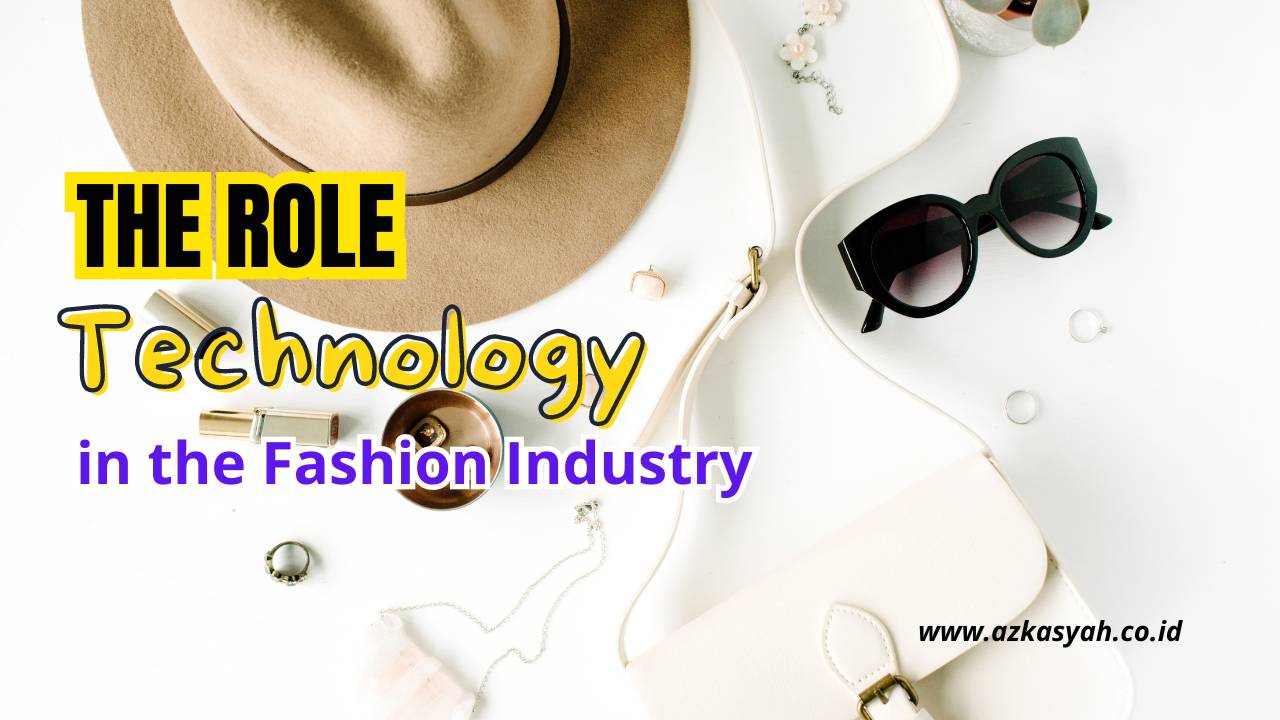The fashion industry has always been a dynamic and ever-evolving sector, characterized by creativity, trendsetting, and constant change. However, in recent years, technology has emerged as a powerful force driving a new wave of innovation in fashion. From advanced manufacturing techniques to digital marketing strategies, technology is reshaping the way fashion is designed, produced, marketed, and consumed. This article explores the pivotal role of technology in the fashion industry and provides real-world examples of how it is revolutionizing the way we experience fashion.
The Evolution of Fashion through Technology
1. Digital Design and Virtual Prototyping
- Transforming Creativity: Technology has revolutionized the design process in fashion. Digital tools like CAD (Computer-Aided Design) software allow designers to create and modify designs with unprecedented precision and flexibility. Virtual prototyping enables designers to visualize and test their creations in a digital environment before they are physically produced, saving time and reducing waste.
- Case Study: Brands like Adidas and Nike have embraced 3D design and virtual sampling, allowing them to bring innovative products to market faster and more sustainably.
2. Sustainable Fashion through Technology
- Eco-friendly Production: The fashion industry has faced criticism for its environmental impact, but technology is offering solutions. Advanced materials, such as recycled fabrics and biodegradable textiles, are becoming more common. Additionally, technologies like 3D printing and laser cutting are reducing material waste and energy consumption in production.
- Case Study: Stella McCartney, a pioneer in sustainable fashion, uses cutting-edge technologies to create eco-friendly collections that do not compromise on style.
3. Smart Textiles and Wearable Technology
- The Future of Fashion: The integration of technology into textiles has given rise to smart fabrics and wearable tech. These innovations include garments that monitor health, regulate temperature, or even charge devices. The potential applications of smart textiles are vast, from sportswear to high fashion.
- Case Study: Companies like Ralph Lauren have developed smart clothing, such as the PoloTech shirt, which tracks biometric data and offers real-time workout feedback.
4. AI and Machine Learning in Fashion
- Personalized Experiences: Artificial intelligence (AI) and machine learning are being used to personalize the shopping experience. By analyzing customer data, AI can predict trends, recommend products, and optimize inventory management. This not only enhances customer satisfaction but also improves business efficiency.
- Case Study: Amazon’s Echo Look, a voice-activated camera, uses AI to provide fashion advice and suggest outfits based on user preferences.
5. Augmented Reality (AR) and Virtual Reality (VR)
- Revolutionizing Retail: AR and VR are transforming the retail experience. Virtual fitting rooms allow customers to try on clothes without physically being in a store, while AR apps let users see how products will look in real life. These technologies are bridging the gap between online and offline shopping.
- Case Study: Gucci’s AR-powered app lets users virtually try on sneakers, making online shopping more interactive and engaging.
6. Blockchain and Fashion
- Ensuring Transparency: Blockchain technology is being used to improve transparency and traceability in the fashion supply chain. Consumers can now verify the authenticity of a product and trace its journey from raw material to finished garment. This not only combats counterfeiting but also promotes ethical practices.
- Case Study: Luxury brand LVMH has implemented blockchain to provide customers with a digital certificate of authenticity for its products.
7. E-commerce and Social Media
- The Digital Marketplace: The rise of e-commerce has transformed how fashion is sold and marketed. Social media platforms like Instagram and TikTok have become powerful tools for fashion brands to reach a global audience. Influencer marketing, shoppable posts, and live streaming are now integral parts of fashion marketing strategies.
- Case Study: Fashion Nova, a brand known for its social media dominance, leverages Instagram influencers to drive sales and build brand loyalty.
The Impact of Technology on Fashion Production
1. Automation and Robotics
- Efficient Manufacturing: Automation and robotics are streamlining fashion production. Automated cutting machines, robotic sewing, and AI-powered quality control systems are increasing efficiency, reducing costs, and improving consistency in manufacturing.
- Case Study: Zara’s parent company, Inditex, uses advanced automation in its distribution centers to ensure rapid product turnover and minimize stock shortages.
2. Mass Customization and On-Demand Production
- Tailored to You: Technology has made mass customization possible, allowing consumers to personalize products to their preferences. On-demand production reduces excess inventory and waste, catering to the growing demand for unique, customized fashion items.
- Case Study: Nike’s “Nike By You” platform allows customers to design their own sneakers, selecting colors, materials, and even adding personalized text.
The Future of Fashion: Predictions and Trends
1. Sustainability as a Core Focus
- As consumers become more environmentally conscious, sustainability will remain a key driver of innovation in fashion. Technologies that minimize waste, reduce carbon footprints, and promote circular fashion will continue to evolve.
2. The Rise of Virtual Fashion
- Virtual fashion, where garments exist only in digital form, is gaining traction. This trend is driven by the popularity of virtual worlds and gaming, where users purchase digital clothing for their avatars. Virtual fashion also offers a sustainable alternative to physical production.
3. Hyper-Personalization
- The future of fashion lies in hyper-personalization, where AI and data analytics will enable brands to create bespoke experiences and products tailored to individual preferences, lifestyle, and even biometric data.
4. The Intersection of Fashion and Technology
- The convergence of fashion and technology will lead to innovative collaborations between tech companies and fashion brands. This will result in new products, services, and experiences that redefine the boundaries of fashion.
Technology is no longer just a tool for the fashion industry; it is a catalyst for change, driving innovation and transforming every aspect of the fashion world. From design and production to marketing and retail, technology is shaping the future of fashion in ways that were once unimaginable. As the industry continues to evolve, those who embrace technology will lead the way, creating a more sustainable, personalized, and exciting future for fashion.
While the article was crafted based on general knowledge and insights, it is recommended to refer to industry reports, case studies, and academic publications for further in-depth information on the topics discussed.



